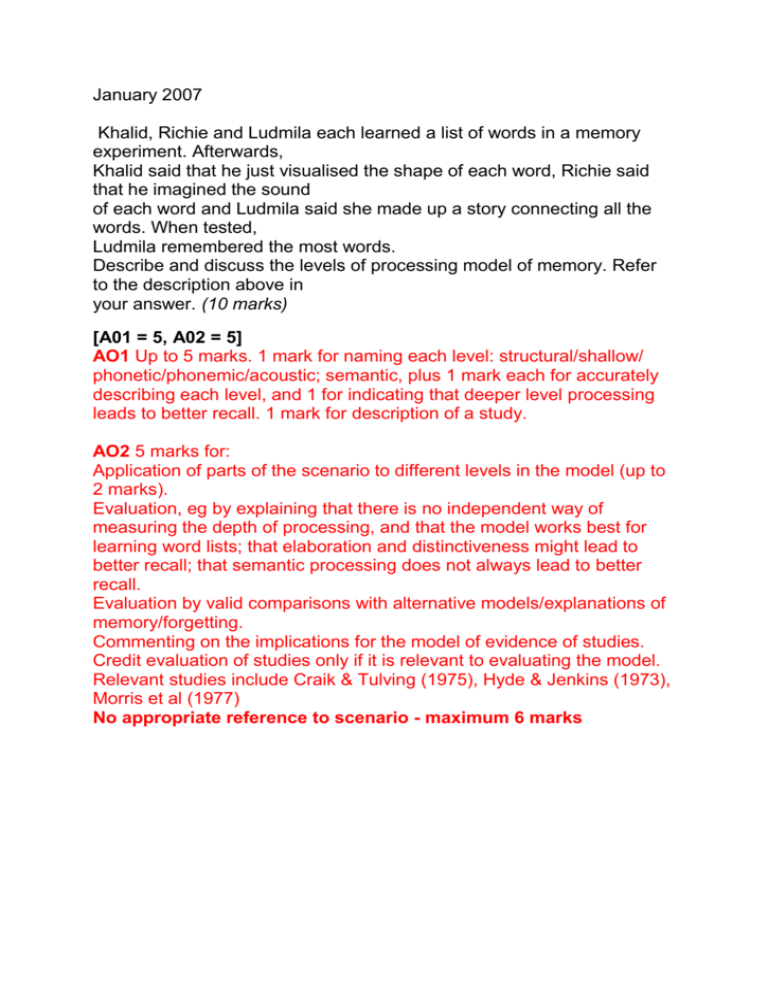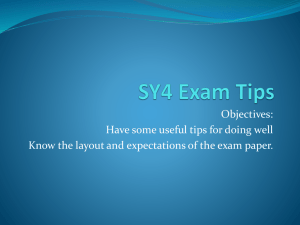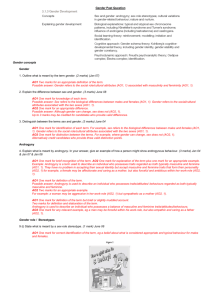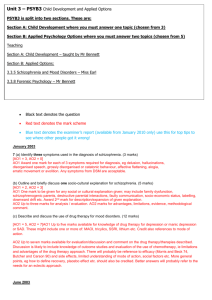mark schemes 2007 LoP q
advertisement

January 2007 Khalid, Richie and Ludmila each learned a list of words in a memory experiment. Afterwards, Khalid said that he just visualised the shape of each word, Richie said that he imagined the sound of each word and Ludmila said she made up a story connecting all the words. When tested, Ludmila remembered the most words. Describe and discuss the levels of processing model of memory. Refer to the description above in your answer. (10 marks) [A01 = 5, A02 = 5] AO1 Up to 5 marks. 1 mark for naming each level: structural/shallow/ phonetic/phonemic/acoustic; semantic, plus 1 mark each for accurately describing each level, and 1 for indicating that deeper level processing leads to better recall. 1 mark for description of a study. AO2 5 marks for: Application of parts of the scenario to different levels in the model (up to 2 marks). Evaluation, eg by explaining that there is no independent way of measuring the depth of processing, and that the model works best for learning word lists; that elaboration and distinctiveness might lead to better recall; that semantic processing does not always lead to better recall. Evaluation by valid comparisons with alternative models/explanations of memory/forgetting. Commenting on the implications for the model of evidence of studies. Credit evaluation of studies only if it is relevant to evaluating the model. Relevant studies include Craik & Tulving (1975), Hyde & Jenkins (1973), Morris et al (1977) No appropriate reference to scenario - maximum 6 marks June 2007 Describe and discuss the levels of processing model of memory. Explain how this model could be applied to the task of preparing for an examination. (10 marks) [AO1 = 5, AO2 = 5] AO1 Up to 5 marks. 1 mark for naming each level: structural/orthographic/shallow; acoustic/auditory/phonetic; semantic/deep; 1 each for factual elaboration, and 1 for indicating that deeper level processing leads to better recall. I mark only for description of a relevant study. Likely studies include Craik & Tulving (1975), Morris et al (1977), Hyde & Jenkins (1973), Nelson & Vining (1978). AO2 Up to 5 marks for: Evaluation of the model, including the use of studies to support or refute the model. Evaluations might refer to the problem that there is no independent way of measuring the depth of processing, and that the model works best for learning word lists. Also to the idea that elaboration and distinctiveness might lead to better recall. Analysis of the implications of the model for exam preparation, eg the importance of processing information semantically; recall as a byproduct of processing. The use of examples that specifically illustrate application of the model to revision. Evaluation of the model by comparison with others, eg the multistore model emphasis on repetition rehearsal. No application to task – maximum 6 marks








